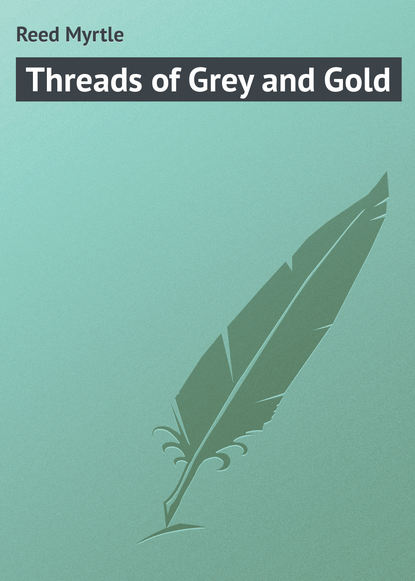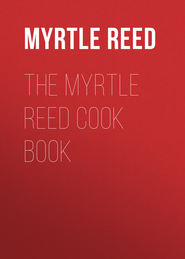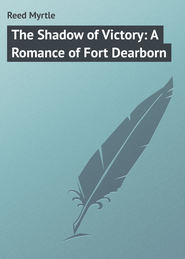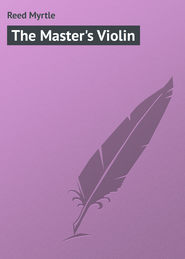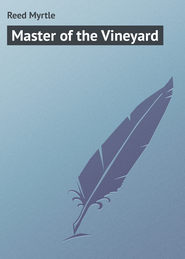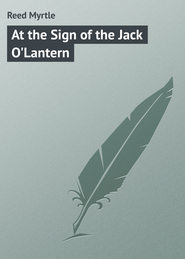По всем вопросам обращайтесь на: info@litportal.ru
(©) 2003-2024.
✖
Threads of Grey and Gold
Настройки чтения
Размер шрифта
Высота строк
Поля
She was twenty-six, some three months younger than Washington; she had wealth, and two children. Mr. Custis had been older than his Patsy, for she was married when she was but seventeen. He had been a faithful and affectionate husband, but he had not appealed to her imagination, and it was doubtless through her imagination, that the big Virginia Colonel won her heart.
She left Mr. Chamberlayne’s and went to her home – the “White House” – near William’s Ferry. The story is that when Washington came from Williamsburg, he was met at the ferry by one of Mrs. Custis’s slaves. “Is your mistress at home?” he inquired of the negro who was rowing him across the river.
“Yes, sah,” replied the darkey, then added slyly, “I recon you am de man what am expected.”
It was late in the afternoon of the next day when Washington took his departure, but he had her promise and was happy. A ring was ordered from Philadelphia, and is duly set down in his accounts: “One engagement ring, two pounds, sixteen shillings.”
Then came weary months of service in the field, and they saw each other only four times before they were married. There were doubtless frequent letters, but only one of them remains. It is the letter of a soldier:
“We have begun our march for the Ohio, [he wrote]. A courier is starting for Williamsburg, and I embrace the opportunity to send a few words to one whose life is now inseparable from mine.
“Since that happy hour, when we made our pledges to each other, my thoughts have been continually going to you as to another self. That an All-powerful Providence may keep us both in safety is the prayer of your ever faithful and affectionate Friend,
”G. Washington
“20th of July
Mrs. Martha Custis.”
On the sixth of the following January they were married in the little church of St. Peter. Once again Dr. Mossum, in full canonicals, married “Patsy” Dandridge to the man of her choice. The bridegroom wore a blue cloth coat lined with red silk and ornamented with silver trimmings. His vest was embroidered white satin, his shoe- and knee-buckles were of solid gold, his hair was powdered, and a dress sword hung at his side.
The bride was attired in heavy brocaded white silk inwoven with a silver thread. She wore a white satin quilted petticoat with heavy corded white silk over-skirt, and high-heeled shoes of white satin with buckles of brilliants. She had ruffles of rich point lace, pearl necklace, ear-rings, and bracelets, and was attended by three bridesmaids.
The aristocracy of Virginia was out in full force. One of the most imposing figures was Bishop, the negro servant, who had led Washington’s horse up and down the gravelled path in front of Mr. Chamberlayne’s door while the master lingered within. He was in the scarlet uniform of King George’s army, booted and spurred, and he held the bridle rein of the chestnut charger that was forced to wait while his rider made love.
On leaving the church, the bride and her maids rode back to the “White House” in a coach drawn by six horses, and guided by black post-boys in livery, while Colonel Washington, on his magnificent horse, and attended by a brilliant company, rode by her side.
There was no seer to predict that some time the little lady in white satin, brocade silk, and rich laces, would spend long hours knitting stockings for her husband’s army, and that night after night would find her, in a long grey cloak, at the side of the wounded, hearing from stiffening lips the husky whisper, “God bless you, Lady Washington!”
All through the troublous times that followed, Washington was the lover as well as the husband. He took a father’s place with the little children, treating them with affection, but never swerving from the path of justice. With the fondness of a lover, he ordered fine clothes for his wife from London.
After his death, Mrs. Washington destroyed all of his letters. There is only one of them to be found which was written after their marriage. It is in an old book, printed in New York in 1796, when the narrow streets around the tall spire of Trinity were the centre of social life, and the busy hum of Wall Street was not to be heard for fifty years!
One may fancy a stately Knickerbocker stopping at a little bookstall where the dizzy heights of the Empire Building now rise, or down near the Battery, untroubled by the white cliff called “The Bowling Green,” and asking pompously enough, for the Epistles; Domestic, Confidential, and Official, from General Washington.
The pages are yellowed with age, and the “f” used in the place of the “s”, as well as the queer orthography and capitalisation, look strange to twentieth-century eyes, but on page 56 the lover-husband pleads with his lady in a way that we can well understand.
The letter is dated “June 24, 1776,” and in part is as follows:
“My Dearest Life and Love: —
“You have hurt me, I know not how much, by the insinuation in your last, that my letters to you have been less frequent because I have felt less concern for you.
“The suspicion is most unjust; may I not add, is most unkind. Have we lived, now almost a score of years, in the closest and dearest conjugal intimacy to so little purpose, that on the appearance only, of inattention to you, and which you might have accounted for in a thousand ways more natural and more probable, you should pitch upon that single motive which is alone injurious to me?
“I have not, I own, wrote so often to you as I wished and as I ought.
“But think of my situation, and then ask your heart if I be without excuse?
“We are not, my dearest, in circumstances the most favorable to our happiness; but let us not, I beseech of you, make them worse by indulging suspicions and apprehensions which minds in distress are apt to give way to.
“I never was, as you have often told me, even in my better and more disengaged days, so attentive to the little punctillios of friendship, as it may be, became me; but my heart tells me, there never was a moment in my life, since I first knew you, in which it did not cleave and cling to you with the warmest affection; and it must cease to beat ere it can cease to wish for your happiness, above anything on earth.
“Your faithful and tender husband, G. W.”
“’Seventy-six!” The words bring a thrill even now, yet, in the midst of those stirring times, not a fortnight before the Declaration was signed, and after twenty years of marriage, he could write her like this. Even his reproaches are gentle, and filled with great tenderness.
And so it went on, through the Revolution and through the stormy days in which the Republic was born. There were long and inevitable separations, yet a part of the time she was with him, doing her duty as a soldier’s wife, and sternly refusing to wear garments which were not woven in American looms.
During the many years they lived at Mount Vernon, they attended divine service at Christ Church, Alexandria, Virginia, one of the quaint little landmarks of the town which is still standing. For a number of years he was a vestryman of the church, and the pew occupied by him is visited yearly by thousands of tourists while sight-seeing in the national Capitol. Indeed all the churches, so far as known, in which he once worshipped, have preserved his pew intact, while there are hundreds of tablets, statues, and monuments throughout the country.
In the magnificent monument at Washington, rising to a height of more than 555 feet, the various States of the Union have placed stone replicas of their State seals, and these, with other symbolic devices, constitute the inscriptions upon one hundred and seventy-nine of these memorial stones. Not only this, but Europe and Asia, China and Japan have honoured themselves by erecting memorials to the great American.
When at last his long years of service for his country were ended, he and his beloved wife returned again to their beautiful home at Mount Vernon, to wait for the night together. The whole world knows how the end came, with her loving ministrations to the very last of the three restful years which they at this time spent together at the old home, and how he looked Death bravely in the face, as became a soldier and a Christian.
The Old and the New
Grandmother sat at her spinning wheel
In the dust of the long ago,
And listened, with scarlet dyeing her cheeks,
For the step she had learned to know.
A courtly lover, was he who came,
With frill and ruffle and curl —
They dressed so queerly in the days
When grandmother was a girl!
“Knickerbockers” they called them then,
When they spoke of the things at all —
Grandfather wore them, buckled and trim,
When he sallied forth to call.
Grandmother’s eyes were youthful then —
His “guiding stars,” he said;
While she demurely watched her wheel
And spun with a shining thread.
Frill, and ruffle, and curl are gone,
But the “knickers” are with us still —
And so is love and the spinning wheel,
But we ride it now – if you will!
In grandfather’s “knickers” I sit and watch
For the gleam of a lamp afar;
And my heart still turns, as theirs, methinks,
To my wheel and my guiding star.
The Love Story of the “Sage of Monticello”
American history holds no more beautiful love-story than that of Thomas Jefferson, third President of the United States, and author of the Declaration of Independence. It is a tale of single-hearted, unswerving devotion, worthy of this illustrious statesman. His love for his wife was not the first outpouring of his nature, but it was the strongest and best – the love, not of the boy, but of the man.





